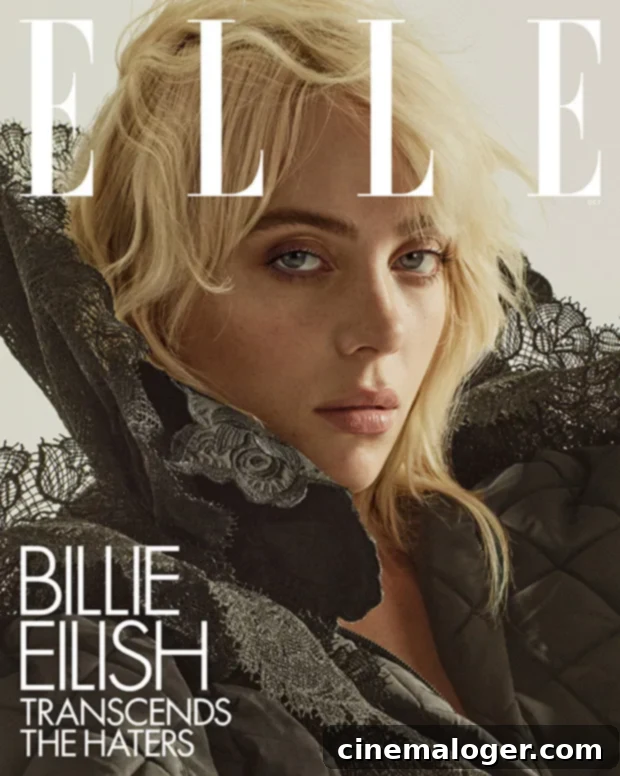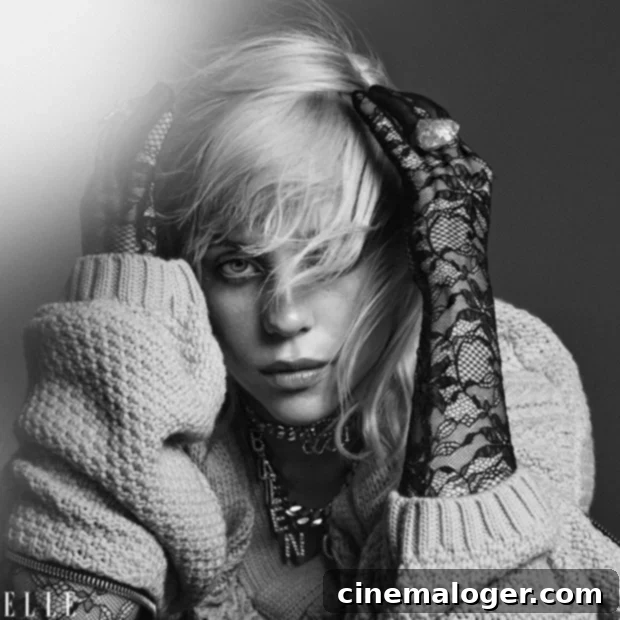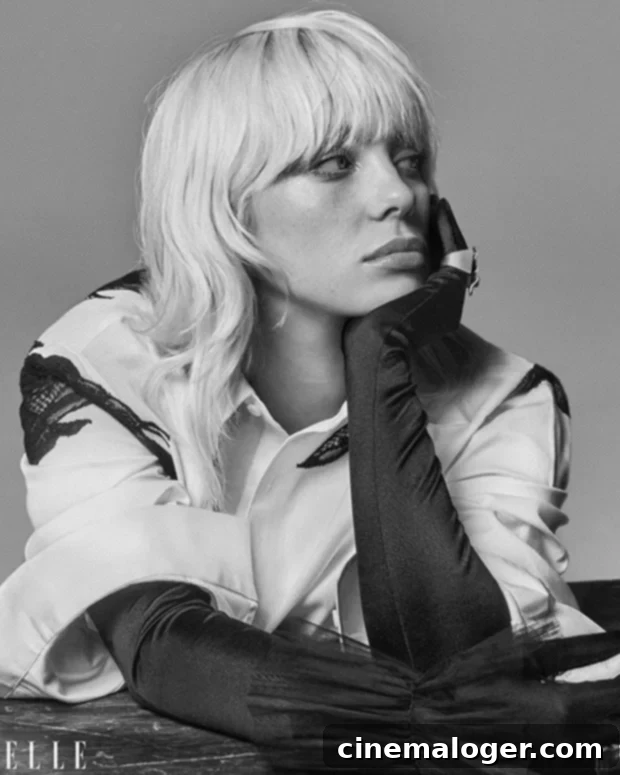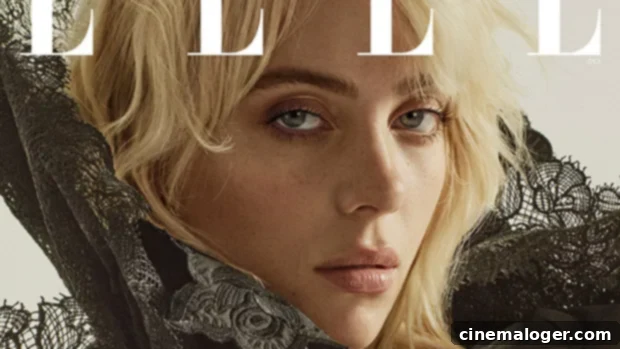Billie Eilish’s Platinum Blonde Revelation: Unveiling the Journey to Anonymity and Self-Discovery
Billie Eilish, the Grammy-winning sensation known for her distinctive musical style and equally iconic aesthetic, sent shockwaves across the globe in March 2021 when she dramatically traded her signature neon green and black hair for a stunning platinum blonde. For years, this vibrant, two-toned look had been an inseparable part of her public identity, instantly recognizable to millions. The transformation was more than just a change in appearance; it represented a profound personal shift, a desire for anonymity, and a powerful statement about self-expression, as the then 19-year-old artist revealed in a candid interview for ELLE’s October 2021 issue.
The sudden unveiling of her new blonde hair captivated fans and the media alike. Gone was the bright, almost fluorescent green that had become synonymous with her early career and rebellious image. In its place was a striking, ethereal blonde, signaling a new chapter not just in her appearance but in her journey as an artist and individual. Billie opened up about the compelling reasons behind this dramatic shift, explaining how it profoundly impacted her, making her feel like a “new person” – a sentiment that resonated deeply with those who followed her transformative path.

The Green Hair: A Double-Edged Sword of Recognition
Billie’s neon green roots paired with dark ends had become an instant identifier. It was a visual shorthand for her unique brand, a bold statement that mirrored her genre-bending music. However, what started as an artistic expression eventually evolved into an unintentional burden. Billie candidly admitted that her green hair was a “dead giveaway” whenever she ventured out in public. It meant constant recognition, a perpetual state of being “on display,” which ultimately took a toll on her desire for personal space and freedom. “I couldn’t go anywhere with that hair because it was so obviously me. I wanted anonymity,” she revealed, articulating a universal yearning for privacy often denied to global superstars.
The constant public gaze meant that simple activities, like a stroll in the park, became fraught with anxiety. Billie recounted an incident that highlighted this struggle: “I went to a park with a friend, and I was like, ‘No, I can’t take off my hood!’ I was terrified of the paparazzi and these stalkers I’ve had.” This raw fear of being incessantly watched, of losing the ability to blend in, was a powerful motivator for change. The green hair, once a symbol of her individuality, had become a cage, trapping her in a cycle of constant visibility.
Embracing Anonymity: A “New Person” Emerges
The decision to go blonde was not merely a superficial whim; it was a strategic move to reclaim a sense of normalcy and personal freedom. Billie vividly described the liberating experience of shedding her iconic look. “But my friend was like, ‘Don’t worry: You’re okay. Nothing’s gonna happen.’ And I took my hood off, and I felt like a new person,” she shared, capturing the profound psychological impact of the transformation. This moment in the park encapsulated the essence of her desire: to exist without immediate recognition, to experience the world without the filter of celebrity.

The desire for anonymity wasn’t an attempt to escape her identity as Billie Eilish, the artist. Instead, it was about protecting her personal self, her individuality beyond the stage. This shift allowed her a level of freedom she hadn’t experienced in years. It enabled her to move through the world with a bit more ease, to observe rather than always be observed. The act of changing her hair became a symbolic gesture of reasserting control over her public and private personas, drawing a clearer boundary between the two.
Artistic Vision and Personal Evolution
Billie further clarified that her hair transformation was also deeply intertwined with her artistic endeavors. “I had no goal of ‘This is going to make everybody think differently of me.’ I’ve had different-colored hair and vibes for everything I’ve ever done. I wanted this album to have its own thing,” she stated. This revelation underscores a crucial aspect of her artistry: an ongoing evolution and a refusal to be confined to a single aesthetic. Each album, each era, brings with it a distinct visual language, and the blonde hair was integral to the narrative she was crafting for her upcoming music.

This approach to her visual identity highlights her commitment to artistic integrity and personal growth. She sees her appearance as an extension of her creative output, not just a static image. The blonde hair wasn’t just a departure from green; it was a fresh canvas, allowing her to explore new facets of her personality and musical themes. It demonstrated her constant push against stagnation and her willingness to redefine herself, both as an individual and as a global pop icon.
Navigating Fan Reactions and Public Scrutiny
While Billie found liberation in her new look, the public reaction was, as expected, mixed. Her devoted fanbase, accustomed to her iconic green hair, often expressed nostalgia for her previous style. “The other day, I posted a video from when I had green hair, and I saw people go, ‘I miss this Billie, the green-haired Billie,'” she recounted. This sentiment, though perhaps well-intentioned, deeply bothered her. She confessed, “I’m still the same person. I’m not just different Barbies with different heads.” This powerful statement challenged the notion that an artist’s identity is solely defined by their appearance.
Billie’s frustration stemmed from the public’s tendency to equate changes in appearance with a fundamental shift in personality or authenticity. She underscored the importance of recognizing the individual behind the image, asserting that evolving styles do not alter one’s core self. This struggle to decouple her identity from her aesthetic choices is a common challenge for many public figures, particularly women, who face intense scrutiny over every aspect of their presentation.
Beyond Hair: A Stand on Personal Style and Autonomy
The discussion around her hair color organically extended to a broader conversation about celebrity fashion and personal autonomy. Billie wants to make it crystal clear that her stylistic choices, whether hair or clothing, are her own and should not be overanalyzed or misconstrued by her fans or the media. She used a simple, yet poignant example to illustrate her point: “The other day, I decided to wear a tank top. It wasn’t even a provocative shirt. But I know people are going to say, ‘Holy f**k, she’s dressing sexy and trying to make a statement.’ And I’m like, ‘No, I’m not. It’s 500 degrees and I just want to wear a tank top.'”
This anecdote brilliantly encapsulates the immense pressure and judgment female celebrities endure. A choice as simple as wearing weather-appropriate attire can be blown out of proportion, interpreted as a deliberate “statement” or a provocative act. Billie’s response is a powerful assertion of her right to dress for comfort and personal preference, free from external expectations or unsolicited interpretations. It’s a reminder that personal style is often just that – personal – and not always a grand declaration.
The Cultural Impact of Celebrity Transformations
Billie Eilish’s hair transformation, much like those of other iconic figures throughout history, sparked widespread discussion because it touched upon themes relevant to broader culture: identity, authenticity, societal expectations, and the fluid nature of self. In an era dominated by social media, celebrity image changes are amplified, becoming moments of collective reflection on how we perceive public figures and ourselves. Billie’s move from green to blonde wasn’t just a beauty trend; it became a symbol of her growth, her push for boundaries, and her unwavering commitment to defining herself on her own terms.
Her journey reminds us that while an artist’s aesthetic can become iconic, it should never overshadow their humanity or their right to evolve. Billie Eilish continues to inspire not only with her groundbreaking music but also with her courageous advocacy for self-acceptance and the freedom to change, defying the rigid boxes that fame often imposes. Her blonde era underscored that true artistry and personal strength lie in continuous self-discovery, regardless of external expectations or the color of one’s hair.
